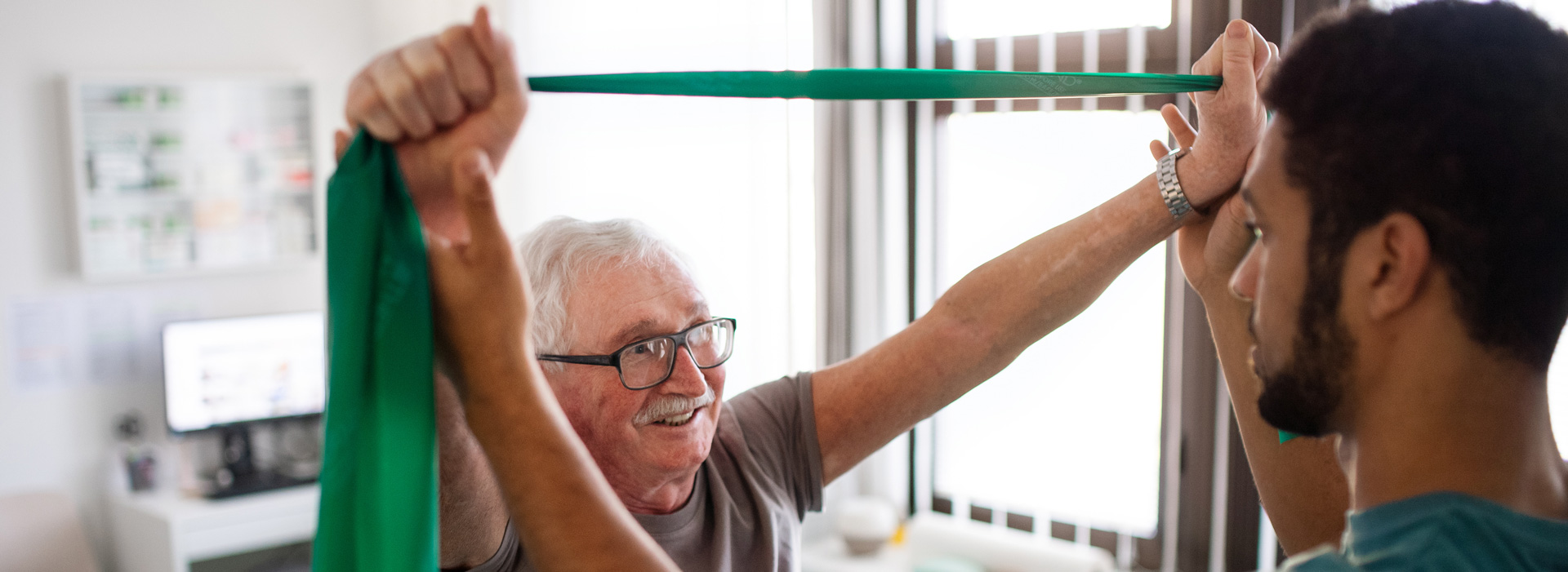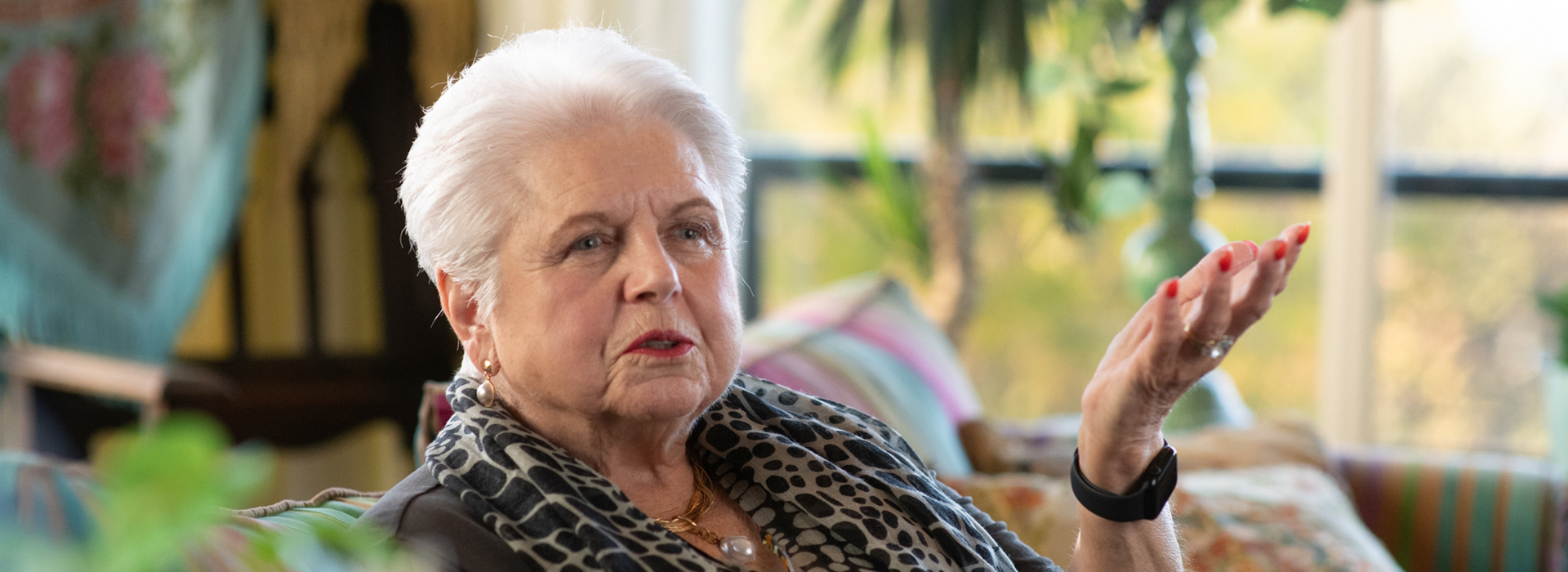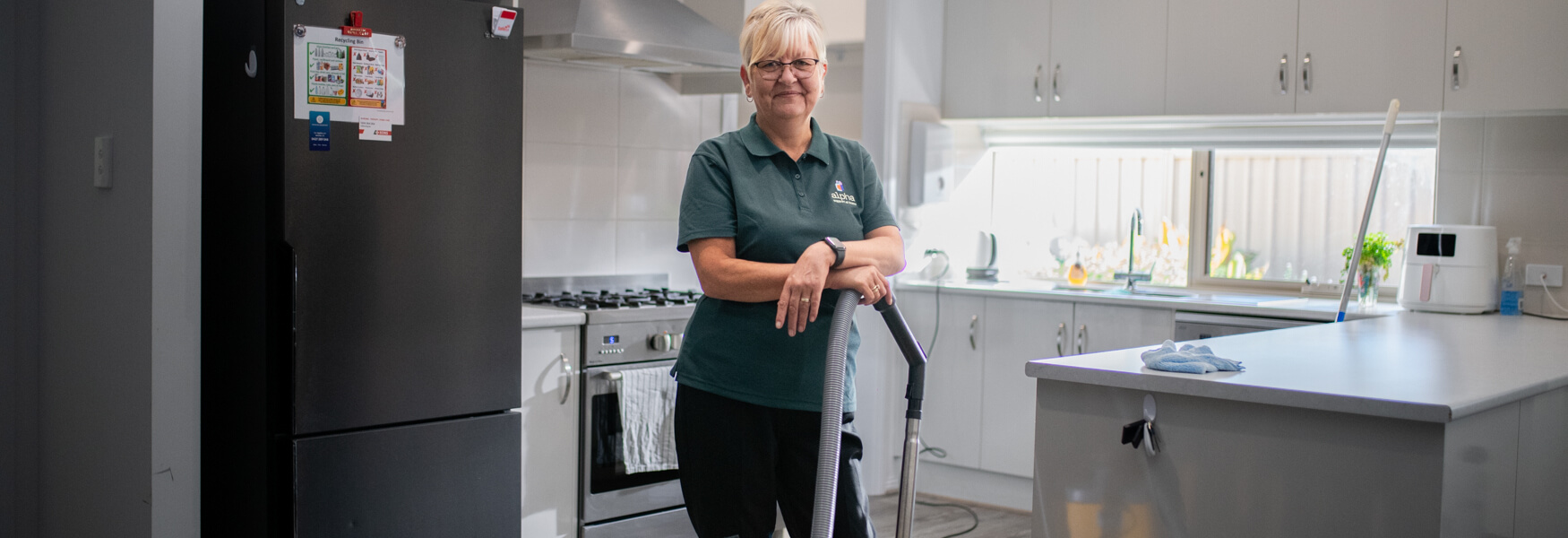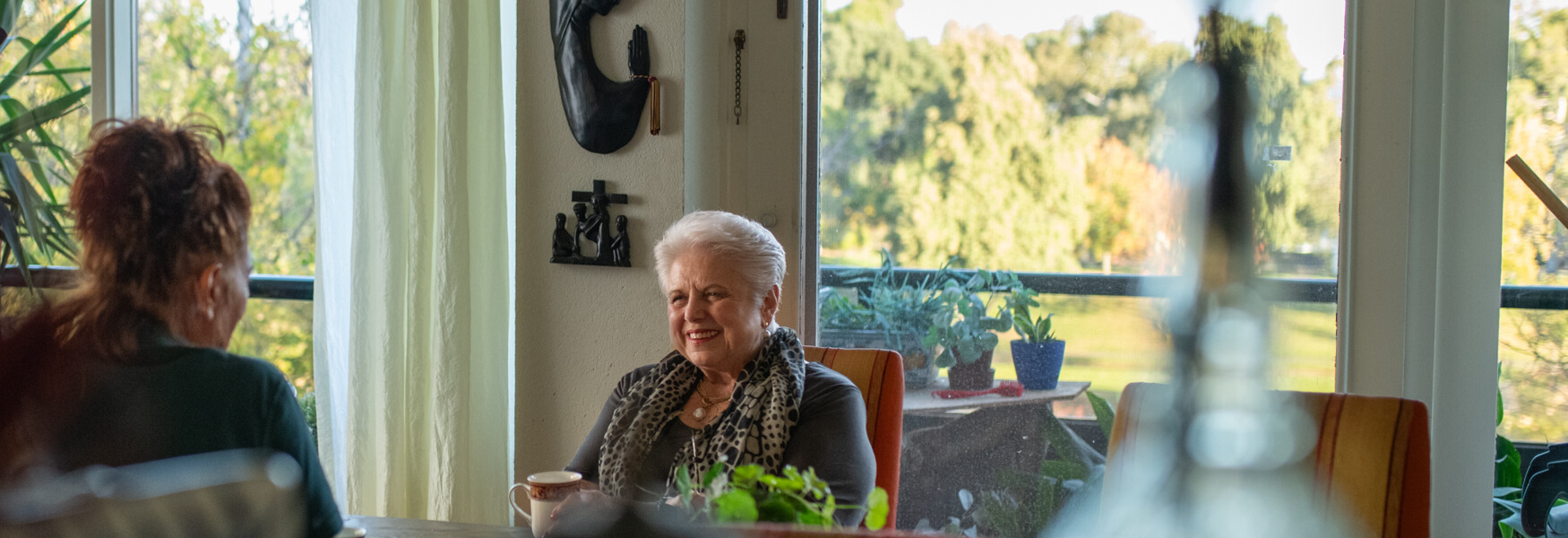Support at Home
Program
Learn more about the new Support at Home Program
What is the Support at Home Program?
The Support at Home Program is the new in-home aged care program introduced by the Australian government on 1 November 2025. It replaces the previous Home Care Packages Program and Short-term Restorative Care Program.
Support at Home aims to provide more effective in-home aged care to support older people to stay independent and at home for longer.
The Support at Home Program includes:
-
Eight support levels: with funding up to approximately $77,709 per year, plus short-term pathways and services
-
Quarterly budget: clients can carry over unspent funds of up to $1,000 or 10% of the quarterly budget (whichever is greater).
-
Defined service list: under Support at Home, all services are specified with clear inclusions and exclusions.
-
No separate administration charges: package management costs are incorporated into service prices rather than charged as separate fees.
-
Care management funding set at 10% of all quarterly budgets: this funding is set aside for providers to deliver care planning, service coordination and to monitor, review and evaluate home care services provided.
-
Separate funded Assistive Technology and Home Modifications Scheme: where they meet the necessary criteria, some people can be approved for a separate funding amount for assistive technology and/or home modifications.
Support at Home Program: Support levels
Support at Home has 8 classifications for ongoing services. Each classification has a funding budget for participants to access services.
- Level 1 support includes an indicative annual budget of $10,696.72
- Level 2 support includes an indicative annual budget of $15,981.68
- Level 3 support includes an indicative annual budget of $21,919.77
- Level 4 support includes an indicative annual budget of $29,545.33
- Level 5 support includes an indicative annual budget of $39,535.04
- Level 6 support includes an indicative annual budget of $47,957.41
- Level 7 support includes an indicative annual budget of $58,122.13
- Level 8 support includes an indicative annual budget of $77,709.00
Support at Home Services
The Support at Home program offers a clear list of services provided, grouped into three categories.
Participants are not automatically eligible for services on the service list. They must be assessed as needing the service, which will be documented in their notice of decision and accompanying support plan.
Additional short-term support
Support at Home also offers the following short-term care programs.
Funding and Budgets
New classifications
Support at Home has eight funding classifications for ongoing services.
The indicative budget amounts are outlined below.
| Support at Home Classification | Quarterly budget | Annual budget |
|---|---|---|
| 1 | $2,674.18 | $10,696.72 |
| 2 | $3,995.42 | $15,981.68 |
| 3 | $5,479.94 | $21,919.77 |
| 4 | $7,386.33 | $29,545.33 |
| 5 | $9,883.76 | $39,535.04 |
| 6 | $11,989.35 | $47,957.41 |
| 7 | $14,530.53 | $58,122.13 |
| 8 | $19,427.25 | $77,709.00 |
Short-term support
| Classification | Budget |
|---|---|
| Restorative Care Pathway | Provides a unit of funding of up to $6,000 (16 weeks). Can access a maximum of 2 units of funding over a 12-month period. |
| End-of-Life Pathway | $25,000 per eligible participant (services are accessible for up to 16 weeks). |
| Assistive Technology and Home Modifications | Based on the assessment you may be eligible for low ($500), medium ($2,000) and high ($15,000*) funding tiers. (Services are accessible for up to 12 months.) |
Participant Contributions
Participant contributions are set by government and paid by participants for services they receive. Payments are based on an assessment by Services Australia of participant income and assets.
| Participant Type | Clinical Supports | Independence Supports | Everyday Living Supports |
|---|---|---|---|
| Full pensioner | 0% | 5% | 17.5% |
| Part pensioner and self-funded Commonwealth Seniors Health Card holder | 0% | Between 5% and 50%* | Between 17.5% and 80%* |
| Self-funded non Commonwealth Seniors Health Card holder | 0% | 50% | 80% |
*Contributions will be applied on a tapered rate based on the participant’s income and assets assessment
Our Service Price List
Every Support at Home provider will set its own prices for services provided. Below we outline our standard charges for services offered. Please note that we have different rates for after hours, weekends and public holidays, all of which are detailed in our full Price List which you can download for your review.
| Support Services | Standard Rates | |||
|---|---|---|---|---|
| Clinical Supports | Detail | Charge | In Home | In Clinic |
| Registered Nurse (RN) | Per Hr | $171.30 | N/A | |
| RN Short Visit | 30 mins | $147.15 | N/A | |
| Enrolled Nurse (EN) | Per Hr | $144.95 | N/A | |
| EN Short Visit | 30 mins | $124.20 | N/A | |
| HSW Medication Administration | Per Hr | $114.10 | N/A | |
| HSW Medication Administration Short Visit | 30 mins | $95.50 | N/A | |
| Allied Health Therapy Assistant | Per Hr | $135.15 | $106.15 | |
| Exercise Physiologist | Per Hr | $216.20 | $185.20 | |
| Occupational Therapist | Per Hr | $216.20 | $185.20 | |
| Physiotherapist | Per Hr | $216.20 | $185.20 | |
| Speech Pathologist | Per Hr | $229.25 | $198.25 | |
| Care Management | Per Hr | $128.20 | N/A | |
| Restorative Care Management | Per Hr | $176.40 | N/A | |
| Independence Supports | Detail | Charge | In Home | In Clinic |
| Personal Care | Per Hr | $108.75 | N/A | |
| Personal Care Short Visit | 30 mins | Per Hr | $94.65 | N/A |
| Social Support, Individual, Cultural, Digital | Per Hr | $108.75 | N/A | |
| Accompanied activities (includes Transport Cost) | Per Hr | $129.85 | N/A | |
| Respite in home | Per Hr | $108.75 | N/A | |
| Transport | 0 - 10 kms | Per Trip | $45.00 | N/A |
| Transport | 10 - 20 kms | Per Trip | $75.00 | N/A |
| Transport | 20 - 30 kms | Per Trip | $105.00 | N/A |
| Transport | 30 - 60 kms | Per Trip | $190.00 | N/A |
| Transport | >60 kms | Negotiable | - | - |
| Everyday Living Supports | Detail | Charge | In Home | In Clinic |
| House cleaning and laundry | Per Hr | $97.45 | N/A | |
| Shopping assistance (Includes transport) | Per Hr | $129.85 | N/A | |
| Gardening and home maintenance | Per Hr | $108.75 | N/A | |
| Meal preparation | Per Hr | $108.75 | N/A | |
Frequently asked questions
The following people will be entitled to an Aged Care Assessment that establishes eligibility for funding:
• Aged 65 or older (50 or older for Aboriginal or Torres Strait Islander people, or people who are homeless or at risk of homelessness).
For a full list of services that clients can access under the Support at Home Program, please review the program service list here.
Participants are not automatically eligible for services on the service list. They must be assessed as needing the service, which will be documented in their notice of decision and accompanying support plan.
Contributions in the Support at Home program differ from the Home Care Package Program. Fees depend on an individual’s funding level and personal circumstances (whether you are a full pensioner, part pensioner, or self-funded retiree).
A no worse off principle applies to the contributions arrangements for people who on 12 September 2024, were either receiving a Home Care Package, on the National Priority System, or assessed as eligible for a package. These participants are no worse off because of the reforms and make the same contributions or lower than they would have had under Home Care Packages Program arrangements.
No. Support at Home services are divided into three categories: clinical, independence, and everyday living supports. Services in the clinical supports category (e.g., nursing and physiotherapy) continue to be fully funded by government for all clients.
To some extent, yes. Clients can save funding between quarters to meet unplanned needs, although this will be capped at $1,000, or 10% of the value of their quarterly budget (whichever is higher).
Individuals assessed as requiring assistive technology and/or home modifications do not need to save up their funds for these services because additional funding is provided separately through the Assistive Technology and Home Modifications Scheme.
Home Care Package recipients as at 1 November 2025 who had an unspent funds balance retained these funds when transitioning to Support at Home. They could be used for ongoing services when their quarterly budget was exhausted, or for the Assistive Technology and Home Modifications Scheme if required.
The Department of Health and Ageing will continue to publish new resources which we feature on our website here for your convenience.
The Single Assessment System for aged care responds to Recommendation 28 of the Royal Commission into Aged Care Quality and Safety.
The Royal Commission found that the previous aged care assessment process was confusing for older people and their families to navigate, and people often bounced between assessment organisations.
The Single Assessment System workforce will simplify and improve an older person’s experience as they enter and progress through the aged care system by:
- providing a single assessment pathway for older people so they don’t have to change assessment providers as their needs change
- ensuring access to assessments in regional, remote and rural areas
- reducing wait times to access an aged care assessment
Under Support at Home, a single provider manages and delivers a Support at Home participant’s services to meet their assessed needs within their budget. The single provider is also responsible for arranging and sourcing any required assistive technology and/or home modifications via purchase or loan through the Assistive Technology and Home Modifications Scheme.
Participants are able to engage a third party to deliver the services if their provider agrees to support these arrangements. If their provider agrees, they will remain responsible for:
- the quality and safety of the services the participant is receiving
- meeting regulatory requirements for all care and services
The registered supporter role is one of the changes under the new Aged Care Act that aim to promote older people’s right to be supported to make decisions.
A registered supporter can be a trusted family member or friend of an older person’s choosing. An older person can have more than one registered supporter.
Some registered supporters also have guardianship, enduring power of attorney or similar. These people are appointed decision makers for the older person and can make decisions on behalf of the older person under state or territory arrangements. An appointed decision maker can only make decisions on the older person’s behalf in line with their active, legal authority.
Becoming a registered supporter does not provide a person with decision-making authority for the older person. A registered supporter’s role is to support the older person to make their own decisions.
Having a registered supporter does not stop older people from being able to receive information, make decisions, or communicate directly with others including aged care providers, My Aged Care and assessors.
Read More Articles
The latest aged care reforms officially came into effect from 1 November 2025, marking a significant milestone for in home support services.
Did you know that falls are the leading cause of injury and having to go to hospital or having a temporary or permanent disability among Australians aged 65 and over?
The latest aged care reforms officially came into effect from 1 November 2025, marking a significant milestone for in home support services...
The new Australian government Support at Home Program will begin on 1 November 2025. Support at Home will replace the existing Home Care...
The Australian government’s aged care reforms are ushering in major changes. These changes include the introduction of the Support at Home...
For many older Australians, the thought of moving into a nursing home can be daunting. The familiar comfort of one’s own home...
If you or a loved one are finding it challenging to manage daily activities at home due to age, disability, or medical...
The desire to maintain independence and remain at home for as long as possible is a top priority for older Australians. This is where home care packages...
As a leading Home Care Package provider in Australia, we understand the importance of receiving quality care and support within the comfort...
The Home Care Packages (HCP) Program is designed to provide coordinated care and services to help older Australians with...









